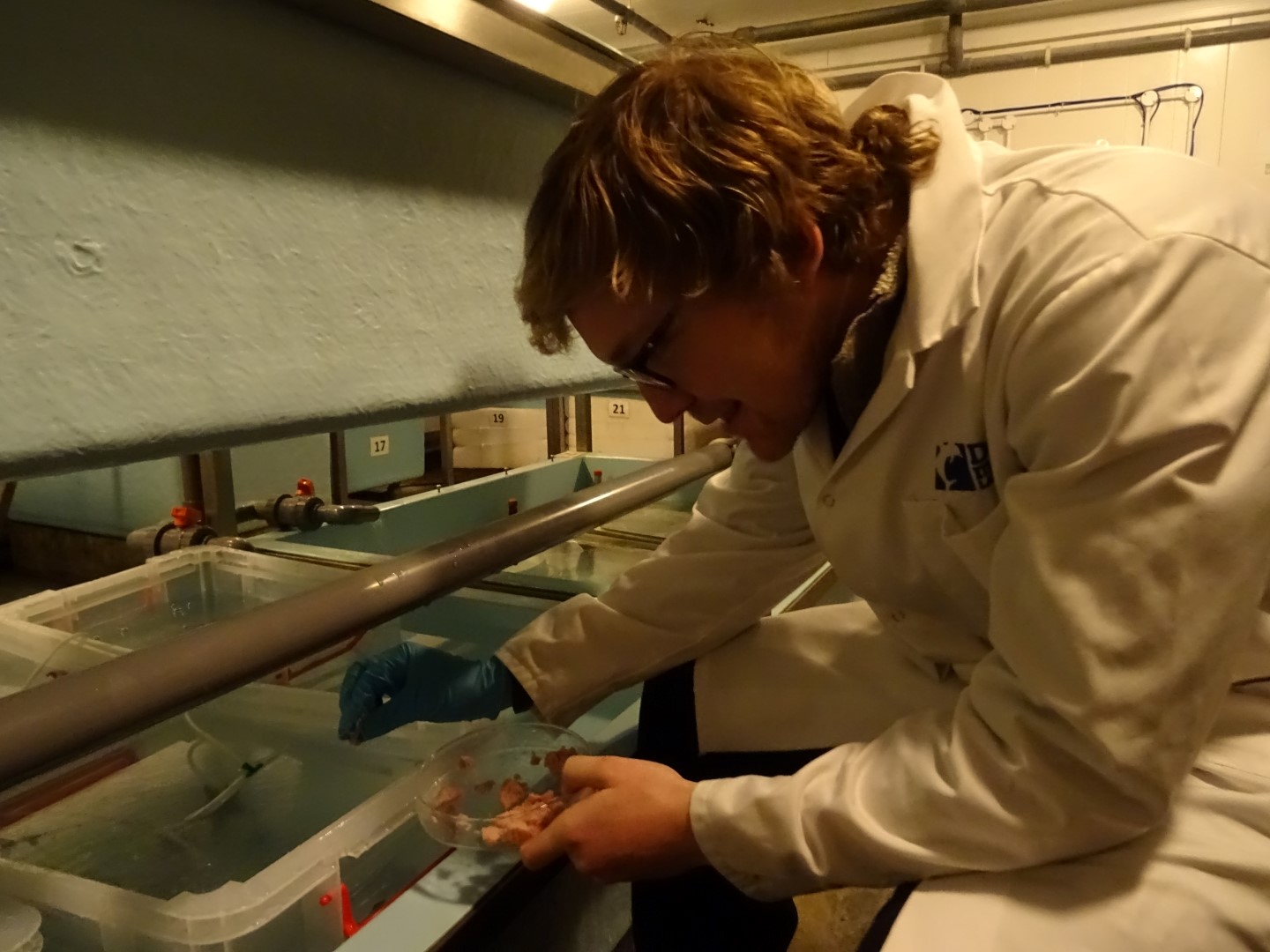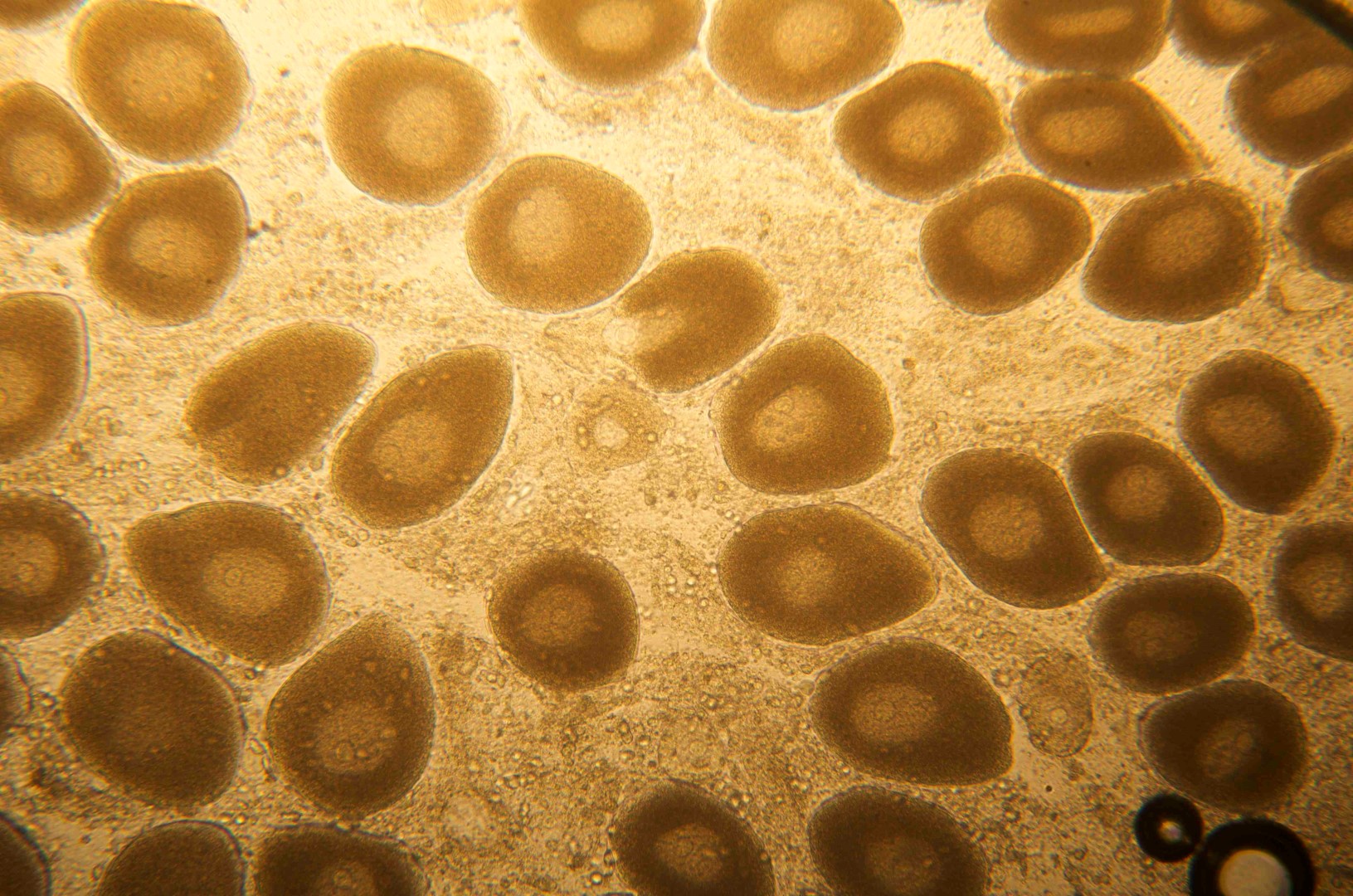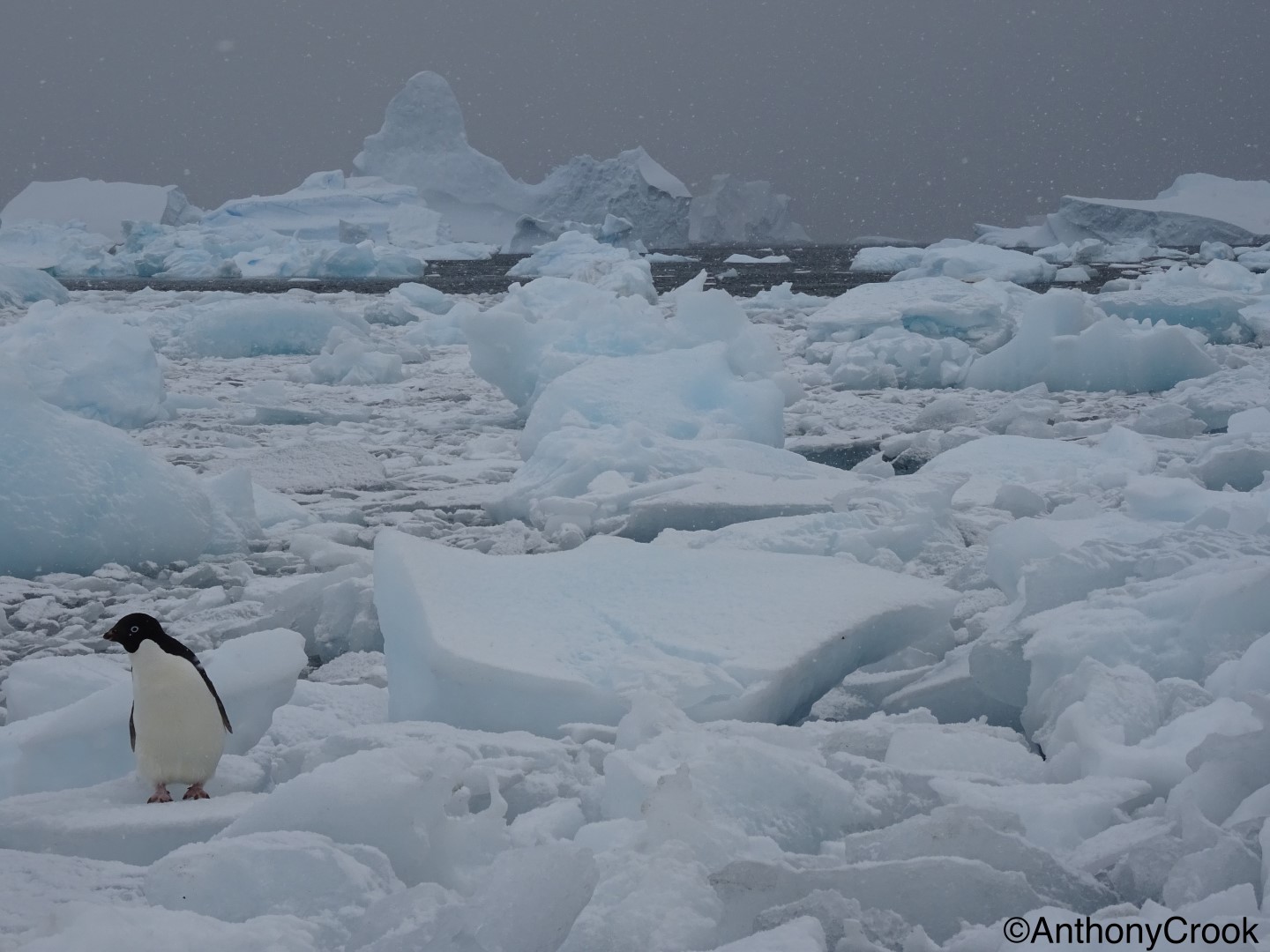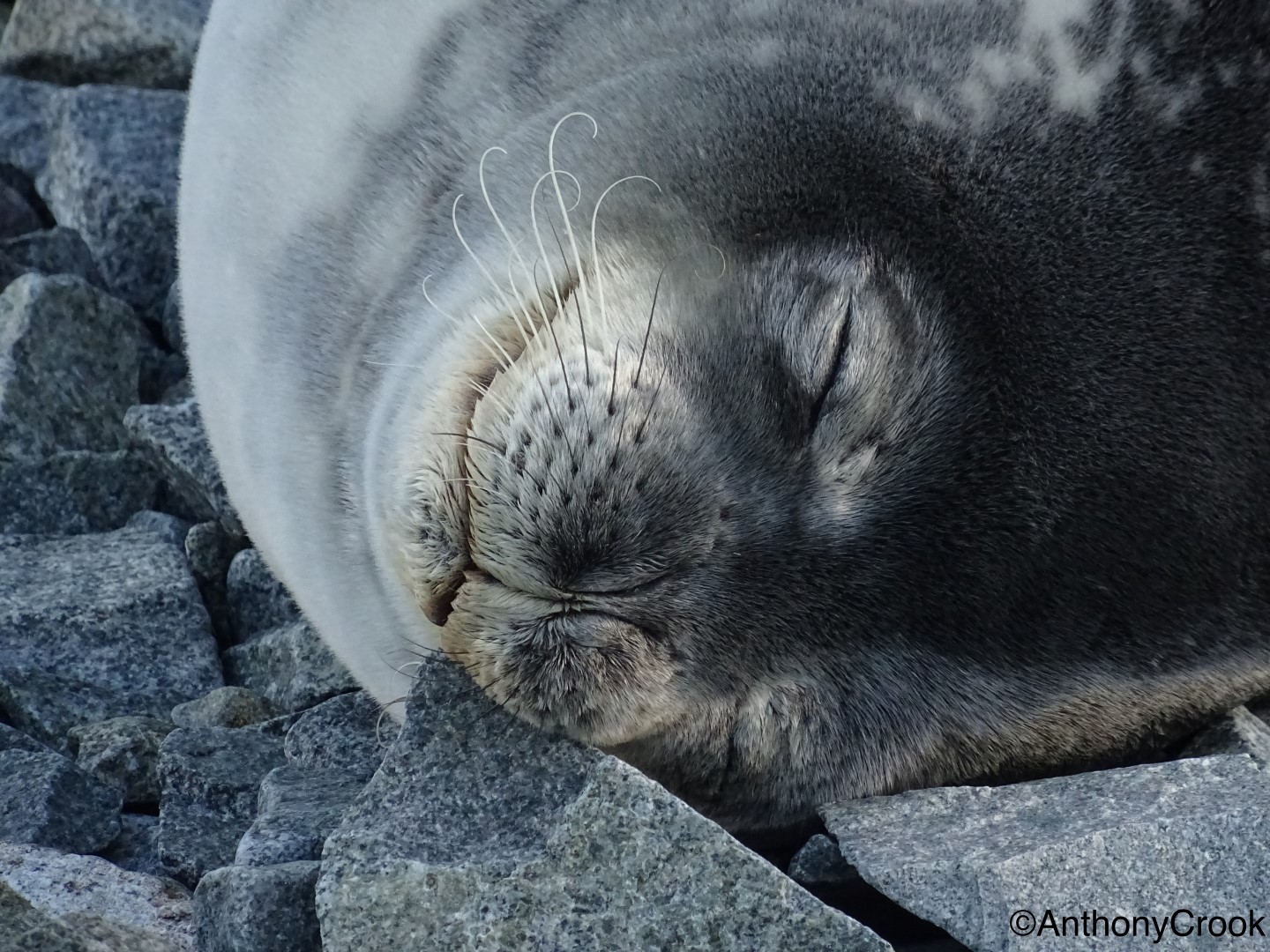Brrrrr, its getting cold down here now as we approach winter! It was -5°C and blowing 30 knots yesterday. It definitely feels like I’m in Antarctica, as if the icebergs and penguins were not enough! The starfish and clams are still happily feeding away at there respective new diets. However, one starfish has taken a fancy to the air stones in the tank. Resulting in one very gassy starfish, as its’ body cavity fills up with oxygen and it floats to the surface. A gentle squeeze removes the excess air; hopefully the starfish will learn its lesson and stop this flatulence.
The starfish and clams are still happily feeding away at there respective new diets. However, one starfish has taken a fancy to the air stones in the tank. Resulting in one very gassy starfish, as its’ body cavity fills up with oxygen and it floats to the surface. A gentle squeeze removes the excess air; hopefully the starfish will learn its lesson and stop this flatulence.
Sperm survival
 An interesting observation I have made during the gender determination of the starfish is the resilience of their sperm. During every dissection I make a gonad smear on a microscope slide to identify whether egg or sperm cells are present. This not only indicates the sex of the specimen is, but also shows whether the individual is sexually mature or not, an important consideration when investigating specific cell metabolism. On one particular smear I forgot about a slide I had made, only to remember about 15 minutes later. Microscopic inspection showed un-motile sperm cells, which I assumed to be dried out and dead. However with a little drop of seawater under the coverslip and the sperm cells burst into life! Indicating that the sperm are not only resistant to 15 minutes of drying out, but also, as they were left at room temperature, they can cope with being warmed up well above there natural limits. The picture below shows a microscopic image of the gonad tissue from a female starfish, with the large yolky egg cells obvious.
An interesting observation I have made during the gender determination of the starfish is the resilience of their sperm. During every dissection I make a gonad smear on a microscope slide to identify whether egg or sperm cells are present. This not only indicates the sex of the specimen is, but also shows whether the individual is sexually mature or not, an important consideration when investigating specific cell metabolism. On one particular smear I forgot about a slide I had made, only to remember about 15 minutes later. Microscopic inspection showed un-motile sperm cells, which I assumed to be dried out and dead. However with a little drop of seawater under the coverslip and the sperm cells burst into life! Indicating that the sperm are not only resistant to 15 minutes of drying out, but also, as they were left at room temperature, they can cope with being warmed up well above there natural limits. The picture below shows a microscopic image of the gonad tissue from a female starfish, with the large yolky egg cells obvious.
Photo of the day award
 Everyday there is a ‘photo of the day award’, which gets the privilege of being displayed on the information screens in the dining room for the day. So far I have been given this honour twice for some expert wildlife photography. The first was an Adélie penguin I captured wondering across the brash ice on a very cold morning.
Everyday there is a ‘photo of the day award’, which gets the privilege of being displayed on the information screens in the dining room for the day. So far I have been given this honour twice for some expert wildlife photography. The first was an Adélie penguin I captured wondering across the brash ice on a very cold morning.
The second was a snoozing Weddell seal in a deep sleep displaying perfectly curled whiskers, probably dreaming about catching a nice big Antarctic cod. These placid seals are amazing divers, capable of reaching depths of 750m during which their heart-rate reduces by 75%! They are also incredibly cute when asleep, often twitching and stretching their flippers.
Other research at Rothera
 In between my dissection days I’ve been helping some of the other scientists with their projects. This has included monitoring the local south polar skua population; there are around 25 pairs of skua which breed at Rothera. However this year it seems that very few of their chicks have survived. The nests are checked once a week and during the last survey no chicks were present. During tough times, these opportunistic feeders will eat the chicks of neighbouring pairs. At one nest we visited, the parent skuas were being very protective even though no chicks were present, indicating that the chick must have only recently died. Not all the research is doom and gloom, I’ve also been helping with the “Antarctic fish photo shoot”! Fish species from around the area are hand collected by divers and photographed in the lab. Making a fish pose is no mean feat and basically involved tickling it with cable tie until it stays still for long enough to snap a picture! A fin clip is also taken for DNA barcoding then the fish are released back to the dive site from where they were found. I was amazed by the diversity of the fish species down here. The picture below shows the beautiful colours of the striped-eye notothen (Lepidonotothen kempi), it looks more like something you would find in the tropics, not Antarctica!
In between my dissection days I’ve been helping some of the other scientists with their projects. This has included monitoring the local south polar skua population; there are around 25 pairs of skua which breed at Rothera. However this year it seems that very few of their chicks have survived. The nests are checked once a week and during the last survey no chicks were present. During tough times, these opportunistic feeders will eat the chicks of neighbouring pairs. At one nest we visited, the parent skuas were being very protective even though no chicks were present, indicating that the chick must have only recently died. Not all the research is doom and gloom, I’ve also been helping with the “Antarctic fish photo shoot”! Fish species from around the area are hand collected by divers and photographed in the lab. Making a fish pose is no mean feat and basically involved tickling it with cable tie until it stays still for long enough to snap a picture! A fin clip is also taken for DNA barcoding then the fish are released back to the dive site from where they were found. I was amazed by the diversity of the fish species down here. The picture below shows the beautiful colours of the striped-eye notothen (Lepidonotothen kempi), it looks more like something you would find in the tropics, not Antarctica!
Antarctic ski resort…….with added crevasse risk!
 Finally last weekend I had the opportunity to go snowboarding! No ski lifts in Antarctica obviously, so you really do earn your runs. Being a snowboarder I was not afforded the luxury of skinning up with large skis to displace my weight evenly so had to trek up though waist deep snow which soon takes it out of you. The experience was made all the more exciting by the field assistants warning you of the risk of falling down crevasses, as such for the first few treks up the hill we wore harnesses and roped up in pairs just in case! The field assistants are incredibly knowledgeable of the mountains and snow conditions, one is known as “the Bear Grylls of Antarctic”, so I felt I was in safe hands!
Finally last weekend I had the opportunity to go snowboarding! No ski lifts in Antarctica obviously, so you really do earn your runs. Being a snowboarder I was not afforded the luxury of skinning up with large skis to displace my weight evenly so had to trek up though waist deep snow which soon takes it out of you. The experience was made all the more exciting by the field assistants warning you of the risk of falling down crevasses, as such for the first few treks up the hill we wore harnesses and roped up in pairs just in case! The field assistants are incredibly knowledgeable of the mountains and snow conditions, one is known as “the Bear Grylls of Antarctic”, so I felt I was in safe hands! Ant(arctica) Crook
Ant(arctica) Crook
Contact info; Twitter: @AtCrooky
